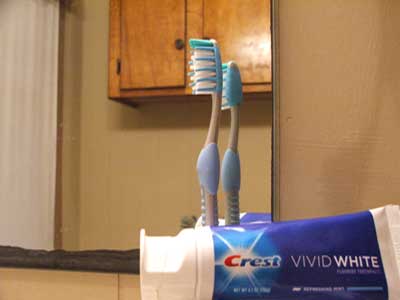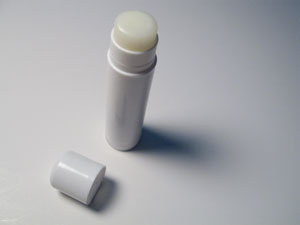
Toothpaste, it’s cool, refreshing, makes your breath smell good and fights bacteria and plaque. Is swallowing toothpaste really bad for you? Why would something that seems so good potentially be bad for your health?
Growing up, learning how to brush your teeth is something every kid learns early. But I remember part of that lesson being, “Don’t swallow the toothpaste, it’s bad for you.” I’m sure most of you have heard this and it’s something we don’t really think about questioning.
Not swallowing the toothpaste is something we trust and it’s something most of us just don’t do. But is it really bad for your health or potentially dangerous? As usual, we’re going to dig a little deeper in this strange and unusual thought and just see what we can come up with.
Toothpaste and the U.S. FDA
If you haven’t noticed before, toothbrushes don’t have any kind of warning label on the packages. Nothing noted by the FDA at all. But look on a tube of toothpaste and you’ll see that warning label.
1997 marked a point in time that the FDA found toothpaste manufacturers weren’t following the safety guidelines closely enough where toothpaste was concerned. After which a pretty frightening warning label began to appear on your favorite brands.
One such warning states,
“Keep out of reach of children under 6 years of age. If more than used for brushing is accidentally swallowed, get medical help or contact a Poison Control Center right away.”
Now that sounds like a pretty scary warning doesn’t it? It’s definitely something that would make people a little weary of swallowing their toothpaste.
The Aftermath of Toothpaste Warning Labels
As you can imagine, after toothpaste boxes hit the shelves with the new warning label attached, there was mass chaos and people were full of worry and had many questions.
The toothpaste consumer phone lines received hundreds of calls from worried consumers with questions, and the Poison Control Centers were receiving tons of calls as well.
There were many worried parents freaking out cos their child may of accidentally swallowed a little bit of toothpaste. Truth is, the average consumer really didn’t know what to expect and weren’t sure just how bad the situation may be.
Basically the answers that were acquired stated that everything would be fine, but there may be some vomiting involved, or not… But if the vomiting continued or became severe, then a visit to the doctor may be in order.
So basically the only side effect to swallowing toothpaste appeared to be an upset stomach and possible dehydration due to excessive vomiting. In fact, according to the statistics, 4,453 cases of fluoride exposure were reported the year before warning labels hit the shelves. But to no surprise, none of these cases were life threatening.
Is the Fluoride found in Toothpaste Toxic?
Without a doubt, fluoride salts are in fact toxic when consumed in large quantities. But a lethal dose of sodium fluoride is somewhere around five to ten grams for an adult. Here’s the kicker, in an eight ounce tube of Colgate, there is less than half a gram of sodium fluoride in the entire tube.
So if you do the math on that, it would take nearly 10 eight ounce tubes of toothpaste to even touch the lower end of that threshold. It’s highly unlikely that anyone brushing their teeth would consume that much. They would literally need to devour a bowl full of toothpaste before it would become toxic.
Yes, children are much smaller and logic tells us it wouldn’t take near as much for a child to become sick from toothpaste that it would for an adult. But any child would still need to consume several tubes of the stuff before they would get sick.
Are the Warning Labels Really Necessary?
After learning the facts about how hard it would be to get sick from toothpaste, then you’re probably wondering, “Are the warning labels really necessary?”
According to the American Dental Association, the main concern with coming into contact with too much fluoride is fluorosis. Fluorosis is a cosmetic discoloration of the teeth caused from too much fluoride coming into contact with your teeth. It’s quite common in children who drink fluoridated water.
It will usually show as small white specks on the teeth and it’s really quite harmless as far as your health is concerned. But it can get pretty bad if a continued habit of eating toothpaste is formed. This is the main reason the ADA recommends a small amount of toothpaste on the brush.
The American Dental Association had actually protested the warning labels stating they were grossly over exaggerating the severity of what would happen by ingesting toothpaste.
So to sum things up, yes toothpaste tubes do have a warning label, but things aren’t as bad as they make it sound. Unless you swallow a half gallon of toothpaste, odds are you’ll be fine. But I still believe it’s good practice to teach your children not to eat that yummy tasting stuff. If for no other reason, it’s tradition.
Do you like the taste of toothpaste or have you ever swallowed enough to become nauseous? Share you thoughts in the comments below.



thanks for sharing this. I was never a believer that swallowing toothpaste can be fatal.
Yah I’m not really certain why parents push this belief so strongly onto their children. It would really take a huge amount of toothpaste to make you sick. Thanks for sharing your thoughts Anand.
I read somewhere that swallowing a toothpaste is really bad for you because of its ingredients. Toothpaste ingredients are not meant to be swallowed but I also don’t think it’s fatal.
Although it’s true that the ingredient fluoride is not all that great for you to ingest, there’s not nearly enough of it in an entire tube to do you any harm. You’d literally have to eat a bucket full before you would feel any ill effects. But I think it’s something most of us learn while growing up.
Nice post. Thanks for sharing.it is true that swallowing toothpaste really bad for us
Thanks Zablss, glad you enjoyed the post.
Yah it’s true that toothpaste ingestion can be bad for you, but only in large quantities.
Thanks for clearing this up for me. As a kid, my parents always warned me not to swallow the paste, which i did so, because it contains bone powder of dead animals.
Ahh very interesting addition to the discussion Hugh. I wasn’t aware the powdered animal fragments were in toothpaste. I’ll have to do a little more research on that. Thanks for the comment.
I think toothpaste would make you ill if you had enough of it. But probably the same affect as eating mints.
Yah that’s about what it amounts to Phil, it’s really pretty harmless unless consumed in great quantities. Love your illustrations by the way!
Oh man, no mater what happen I won’t eat toothpaste. It’s never gonna delicious.
Yah definitely not on my menu either Glen…lol
I always used to swallow toothpaste, even when my parents said i shouldn’t. For sure i will tell my future children the same 😉
I can see how the minty taste of toothpaste would entice one to eat it. But as long as you’re not eating ounces and ounces of it a day, then a person would be fine.
Many thanks Robert, and glad you like them
Hi – thanks for the amazing blog post – the title made me click! In my industry you can never, ever have enough toothpaste before a date!
Food for thought!
Yep, I agree, nothing worse to spoil a good date than not brushing them rock biters.
This is an interesting post. I also read once that there is as much fluoride in a glass of water as there is in just one squirt of toothpaste.
So I guess we are pretty safe with that 🙂 I’m not that all for fluoride anyway, but, some say it’s the best thing that’s happened.
I just don’t know.
Joan, you’re right there are many different views on fluoride and the benefits associated with it. I’m guessing it’s mostly a matter of opinion. But it certainly isn’t harmful for you in small doses.
Thanks a bunch for dropping by